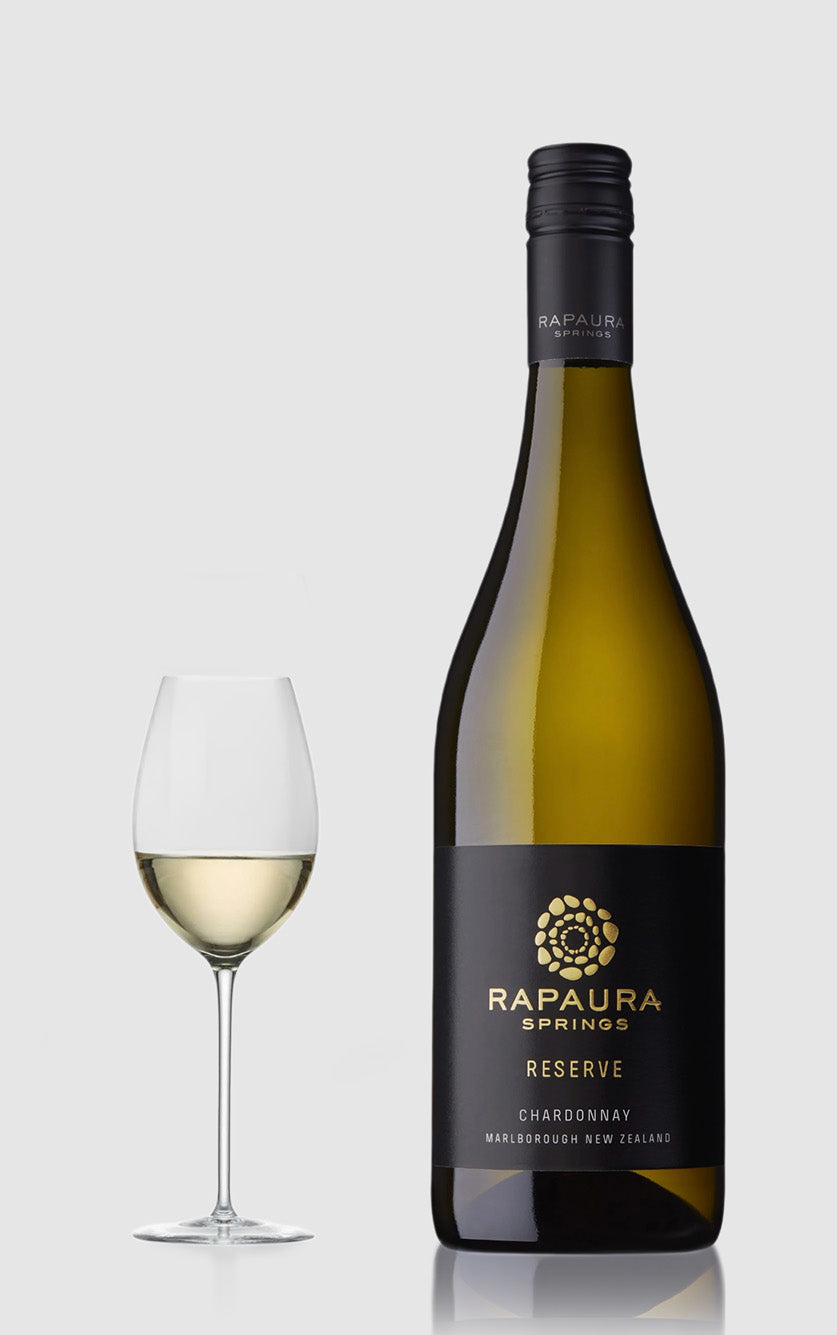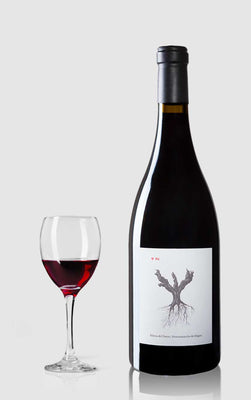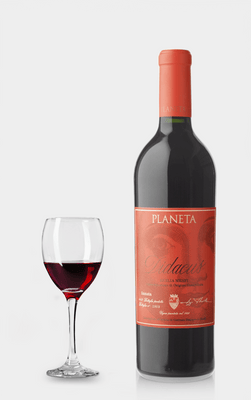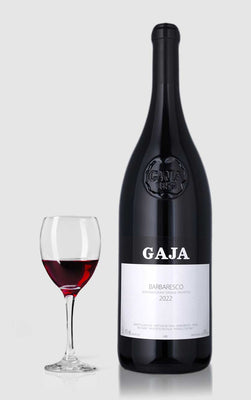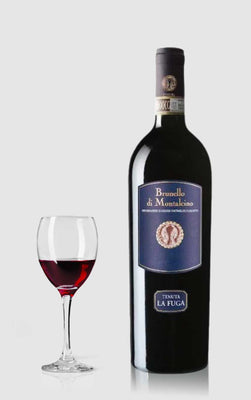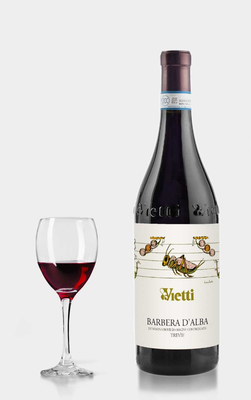Andre kategorier du måske vil kunne lide
Port
-
 ★ 83 – DH Wines★ 4.2 – Vivino
★ 83 – DH Wines★ 4.2 – VivinoHooper's Constitucional 10 Years Old Port
Vendor:HoopersRegular price 249,00 DKKRegular priceUnit price / per -
 ★ 90 – DH Wines
★ 90 – DH WinesRamos Pinto Vintage Quinta Ervamoira 2005
Vendor:Ramos PintoRegular price 549,00 DKKRegular priceUnit price / per -
 ★ 90 – DH Wines
★ 90 – DH WinesRamos Pinto Vintage Quinta Ervamoira 2009
Vendor:Ramos PintoRegular price 549,00 DKKRegular priceUnit price / per -
 ★ 90 – DH Wines
★ 90 – DH WinesRamos Pinto Vintage Quinta Ervamoira 2017, Wood
Vendor:Ramos PintoRegular price 849,00 DKKRegular priceUnit price / per -
 ★ 96 – Decanter★ 94 – Wine Enthusiast★ 92 – Robert Parker★ 92 – DH Wines★ 4.4 – Vivino
★ 96 – Decanter★ 94 – Wine Enthusiast★ 92 – Robert Parker★ 92 – DH Wines★ 4.4 – VivinoDalva Colheita 1990 port wine
Vendor:DalvaRegular price 549,00 DKKRegular priceUnit price / per0,00 DKKSale price 549,00 DKK -
 ★ 98 – DH Wines★ 4.8 – Vivino
★ 98 – DH Wines★ 4.8 – VivinoFerreira Vintage Port 2016 in wooden box
Vendor:FerreiraRegular price 749,00 DKKRegular priceUnit price / per -
 ★ 93 – DH Wines★ 4.1 – Vivino
★ 93 – DH Wines★ 4.1 – VivinoQuinta Vale D'Aldeia 10 years Tawny Port
Vendor:José Reverendo ConceiçãoRegular price 229,00 DKKRegular priceUnit price / per -
 ★ 98 – Wine Enthusiast★ 98 – DH Wines★ 95 – James Suckling★ 94 – Robert Parker★ 94 – Decanter★ 4.3 – Vivino
★ 98 – Wine Enthusiast★ 98 – DH Wines★ 95 – James Suckling★ 94 – Robert Parker★ 94 – Decanter★ 4.3 – VivinoNiepoort Vintage Port Wine 2019
Vendor:Dirk NiepoortRegular price 899,00 DKKRegular priceUnit price / per -
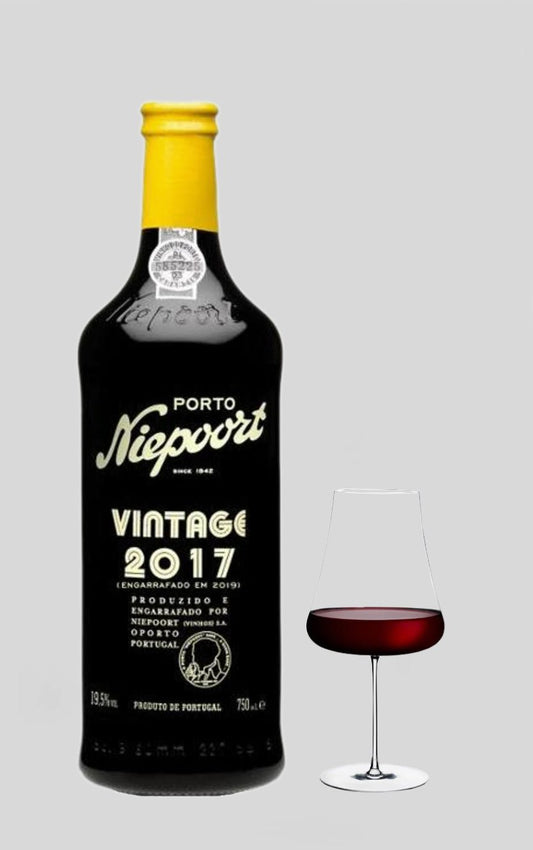 ★ 98 – Robert Parker★ 98 – James Suckling★ 98 – Decanter★ 97 – DH Wines★ 96 – Wine Enthusiast★ 4.3 – Vivino
★ 98 – Robert Parker★ 98 – James Suckling★ 98 – Decanter★ 97 – DH Wines★ 96 – Wine Enthusiast★ 4.3 – VivinoNiepoort Vintage Port Wine 2017
Vendor:Dirk NiepoortRegular price 899,00 DKKRegular priceUnit price / per -
 ★ 94 – DH Wines★ 4.9 – Vivino
★ 94 – DH Wines★ 4.9 – VivinoQuinta do Noval Vintage Port 2000
Vendor:Quinta do NovalRegular price 1.495,00 DKKRegular priceUnit price / per -
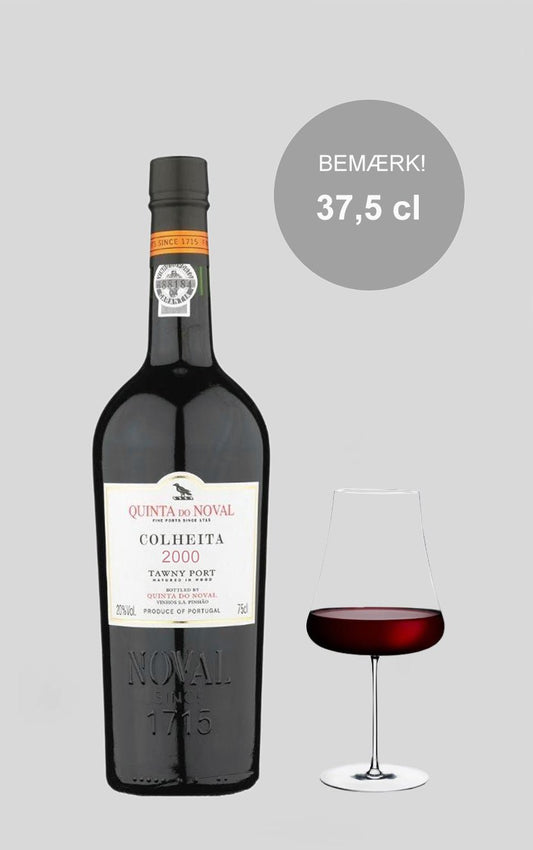 ★ 95 – Wine Enthusiast★ 94 – Robert Parker★ 93 – James Suckling★ 93 – Decanter★ 93 – DH Wines★ 4.3 – Vivino
★ 95 – Wine Enthusiast★ 94 – Robert Parker★ 93 – James Suckling★ 93 – Decanter★ 93 – DH Wines★ 4.3 – VivinoQuinta do Noval, Tawny Port Colheita 2000
Vendor:Quinta do NovalRegular price 329,00 DKKRegular priceUnit price / per -
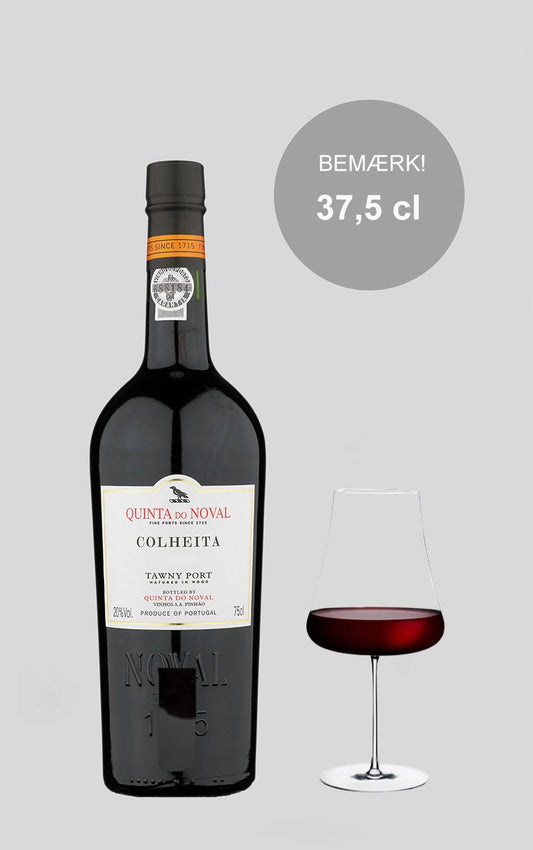 ★ 94 – Wine Enthusiast★ 94 – James Suckling★ 93 – DH Wines★ 92 – Decanter★ 4.5 – Vivino
★ 94 – Wine Enthusiast★ 94 – James Suckling★ 93 – DH Wines★ 92 – Decanter★ 4.5 – VivinoQuinta do Noval 2005 Harvest
Vendor:Quinta do NovalRegular price 249,00 DKKRegular priceUnit price / per -
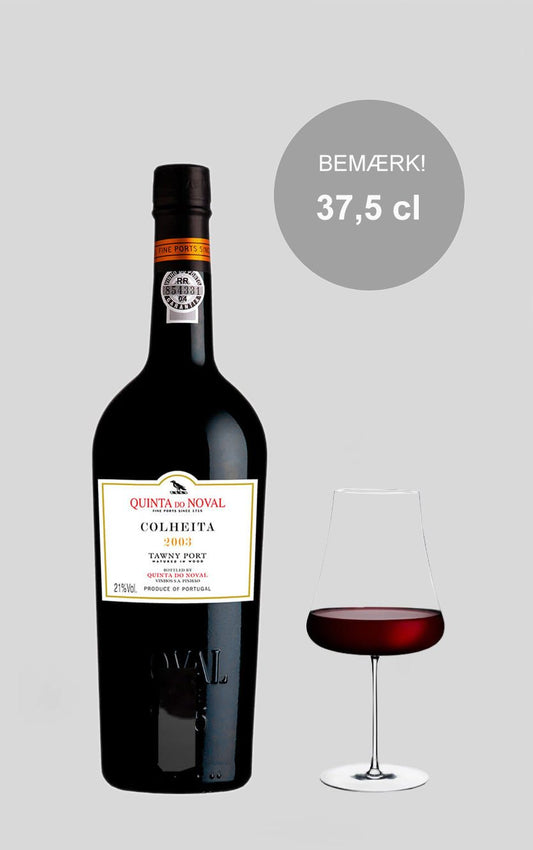 ★ 97 – Wine Enthusiast★ 94 – Decanter★ 94 – DH Wines★ 93 – James Suckling★ 4.4 – VivinoSold out
★ 97 – Wine Enthusiast★ 94 – Decanter★ 94 – DH Wines★ 93 – James Suckling★ 4.4 – VivinoSold outQuinta do Noval 2003
Vendor:Quinta do NovalRegular price 279,00 DKKRegular priceUnit price / per -
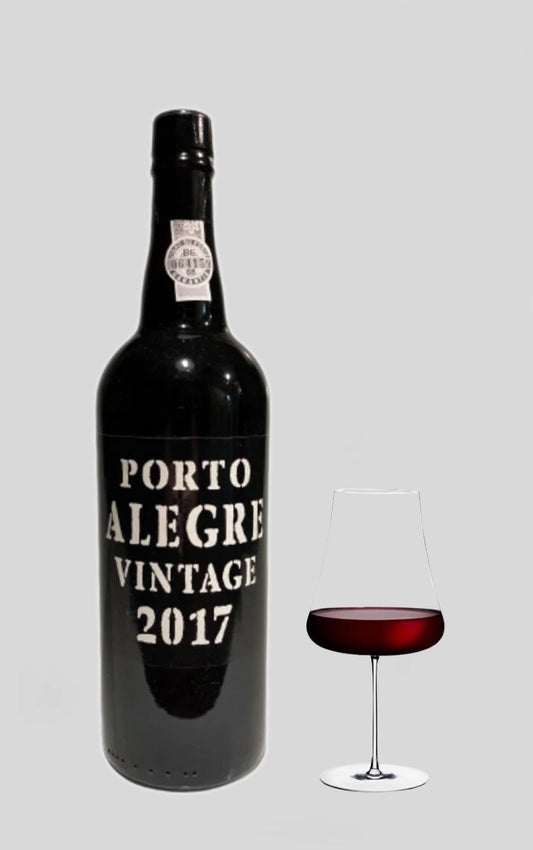 ★ 92 – DH Wines★ 4.8 – Vivino
★ 92 – DH Wines★ 4.8 – VivinoPorto Alegre Vintage Port 2017
Vendor:Porto AlegreRegular price 349,00 DKKRegular priceUnit price / per -
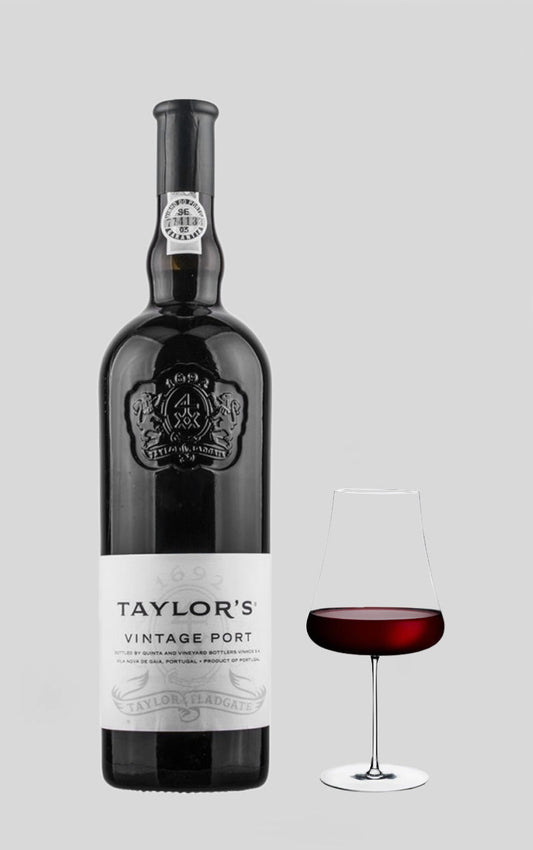 ★ 100 – James Suckling★ 98 – Wine Enthusiast★ 98 – Robert Parker★ 98 – Decanter★ 98 – DH Wines★ 4.3 – Vivino
★ 100 – James Suckling★ 98 – Wine Enthusiast★ 98 – Robert Parker★ 98 – Decanter★ 98 – DH Wines★ 4.3 – VivinoTaylor's Vintage Port 2017
Vendor:TaylorsRegular price 749,00 DKKRegular priceUnit price / per -
 ★ 95 – James Suckling★ 95 – DH Wines★ 94 – Wine Enthusiast★ 92 – Decanter★ 91 – Robert Parker★ 4.4 – VivinoSold out
★ 95 – James Suckling★ 95 – DH Wines★ 94 – Wine Enthusiast★ 92 – Decanter★ 91 – Robert Parker★ 4.4 – VivinoSold outCups Vintage Port 2016
Vendor:KopkeRegular price 449,00 DKKRegular priceUnit price / per -
 ★ 98 – DH Wines★ 4.5 – Vivino
★ 98 – DH Wines★ 4.5 – VivinoCups Vintage Port 2017
Vendor:KopkeRegular price 449,00 DKKRegular priceUnit price / per -
 ★ 96 – James Suckling★ 96 – Decanter★ 95 – Robert Parker★ 94 – DH Wines★ 4.1 – Vivino
★ 96 – James Suckling★ 96 – Decanter★ 95 – Robert Parker★ 94 – DH Wines★ 4.1 – VivinoCups Vintage Port 2018
Vendor:KopkeRegular price 499,00 DKKRegular priceUnit price / per -
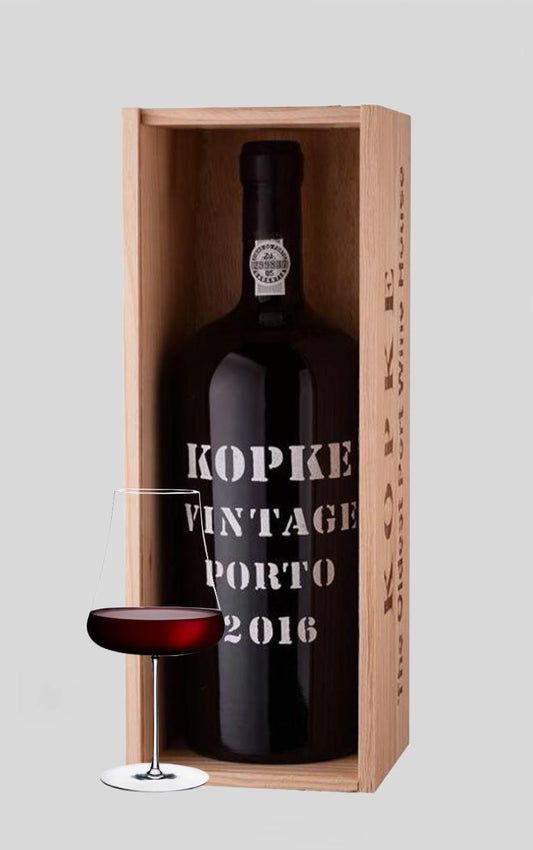 ★ 98 – Robert Parker★ 95 – DH Wines★ 94 – Wine Enthusiast★ 94 – James Suckling★ 4.3 – Vivino
★ 98 – Robert Parker★ 95 – DH Wines★ 94 – Wine Enthusiast★ 94 – James Suckling★ 4.3 – VivinoCups Vintage 2016 Magnum
Vendor:KopkeRegular price 749,00 DKKRegular priceUnit price / per -
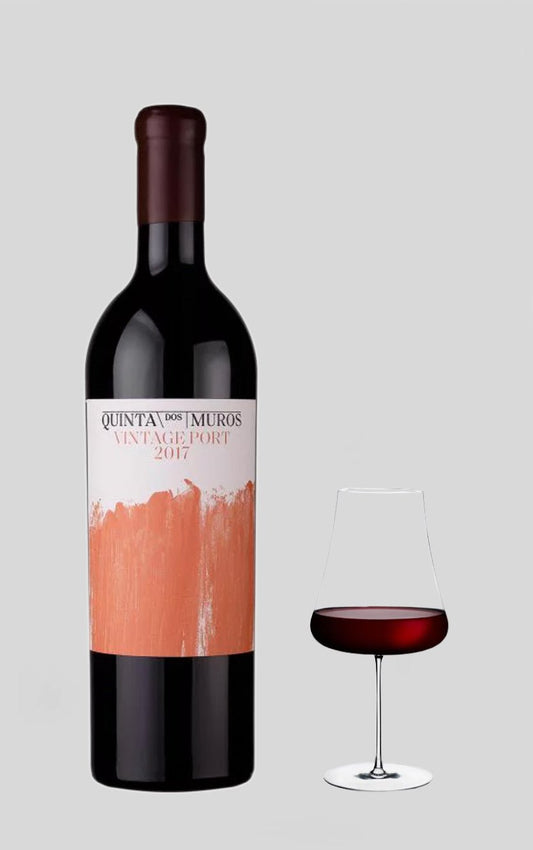 ★ 94 – Robert Parker★ 94 – James Suckling★ 94 – DH Wines★ 4.5 – Vivino
★ 94 – Robert Parker★ 94 – James Suckling★ 94 – DH Wines★ 4.5 – VivinoQuinta do Portal Quinta dos Muros Vintage-2017
Vendor:Quinta dos MurosRegular price 449,00 DKKRegular priceUnit price / per -
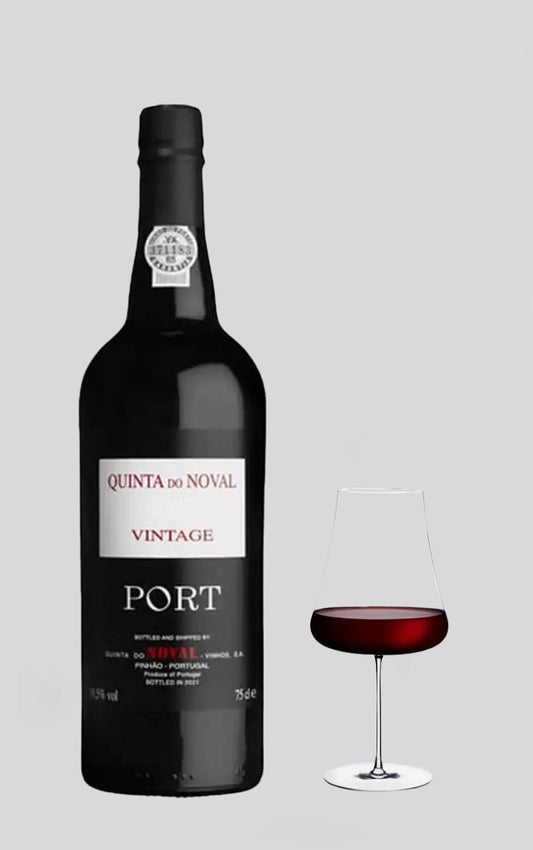 ★ 99 – James Suckling★ 98 – Robert Parker★ 97 – Wine Enthusiast★ 97 – Decanter★ 97 – DH Wines★ 4.3 – Vivino
★ 99 – James Suckling★ 98 – Robert Parker★ 97 – Wine Enthusiast★ 97 – Decanter★ 97 – DH Wines★ 4.3 – VivinoQuinta do Noval Vintage Port OWC 2020
Vendor:Quinta do NovalRegular price 799,00 DKKRegular priceUnit price / per -
 ★ 99 – DH Wines★ 98 – Wine Enthusiast★ 98 – Robert Parker★ 98 – James Suckling★ 94 – Decanter★ 4.6 – Vivino
★ 99 – DH Wines★ 98 – Wine Enthusiast★ 98 – Robert Parker★ 98 – James Suckling★ 94 – Decanter★ 4.6 – VivinoQuinta do Noval Vintage Port 2016
Vendor:Quinta do NovalRegular price 899,00 DKKRegular priceUnit price / per -
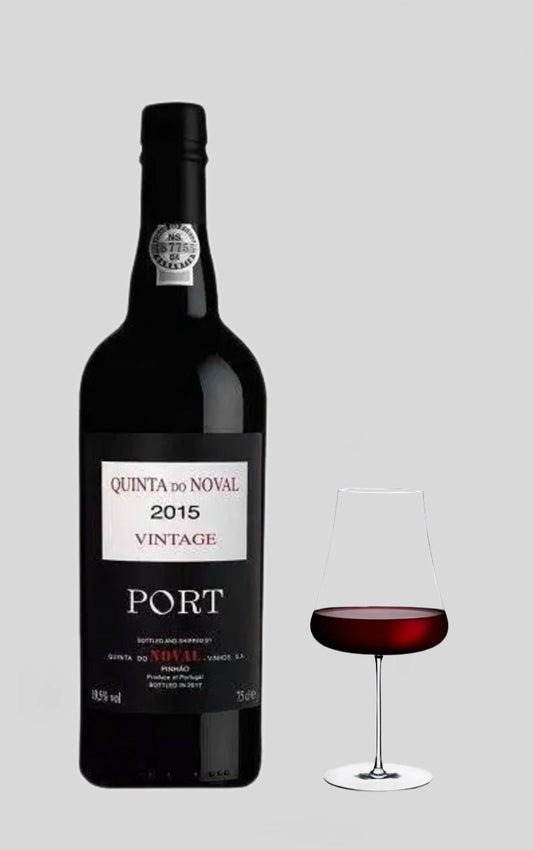 ★ 98 – Wine Enthusiast★ 98 – James Suckling★ 97 – DH Wines★ 95 – Decanter★ 93 – Robert Parker★ 4.5 – Vivino
★ 98 – Wine Enthusiast★ 98 – James Suckling★ 97 – DH Wines★ 95 – Decanter★ 93 – Robert Parker★ 4.5 – VivinoQuinta do Noval 2015 Vintage Port
Vendor:Quinta do NovalRegular price 849,00 DKKRegular priceUnit price / per -
 ★ 98 – Robert Parker★ 98 – Decanter★ 97 – DH Wines★ 96 – Wine Enthusiast★ 96 – James Suckling★ 4.5 – Vivino
★ 98 – Robert Parker★ 98 – Decanter★ 97 – DH Wines★ 96 – Wine Enthusiast★ 96 – James Suckling★ 4.5 – VivinoQuinta do Noval Vintage Port OWC 2018
Vendor:Quinta do NovalRegular price 899,00 DKKRegular priceUnit price / per -
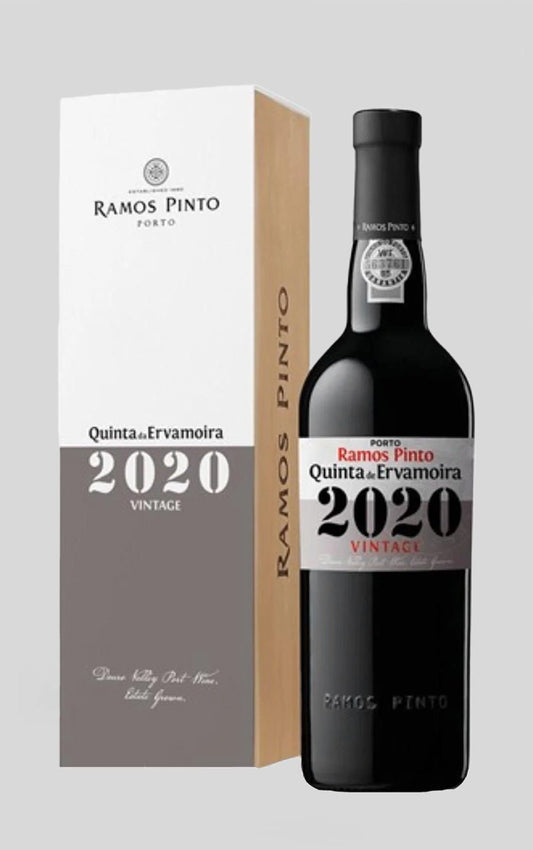 ★ 97 – Robert Parker★ 96 – DH Wines★ 4.5 – Vivino
★ 97 – Robert Parker★ 96 – DH Wines★ 4.5 – VivinoRamos Pinto Quinta De Ervamoira Vintage Port 2020
Vendor:Ramos Pinto-12% rabatRegular price 699,00 DKKRegular priceUnit price / per799,00 DKKSale price 699,00 DKKSale -
 ★ 90 – DH Wines★ 4.3 – Vivino
★ 90 – DH Wines★ 4.3 – Vivino20 year Tawny from Seara d'Ordens
Vendor:Seara d’OrdensRegular price 449,00 DKKRegular priceUnit price / per -
 ★ 94 – Wine Enthusiast★ 94 – Decanter★ 93 – James Suckling★ 93 – DH Wines★ 4.6 – Vivino
★ 94 – Wine Enthusiast★ 94 – Decanter★ 93 – James Suckling★ 93 – DH Wines★ 4.6 – VivinoQuinta Santa Eufemia, 20 Years Old White Port 50 cl.
Vendor:Quinta Santa EufemiaRegular price 289,00 DKKRegular priceUnit price / per -
 ★ 94 – Wine Enthusiast★ 93 – Decanter★ 92 – DH Wines★ 4.5 – Vivino
★ 94 – Wine Enthusiast★ 93 – Decanter★ 92 – DH Wines★ 4.5 – VivinoQuinta Santa Eufemia, 20 Year Tawny
Vendor:Quinta Santa EufemiaRegular price 369,00 DKKRegular priceUnit price / per -
 ★ 94 – Wine Enthusiast★ 93 – James Suckling★ 91 – Robert Parker★ 91 – DH Wines★ 4.0 – Vivino
★ 94 – Wine Enthusiast★ 93 – James Suckling★ 91 – Robert Parker★ 91 – DH Wines★ 4.0 – VivinoFonseca Quinta do Panascal 2005
Vendor:FonsecaRegular price 299,00 DKKRegular priceUnit price / per -
 ★ 93 – Wine Enthusiast★ 93 – James Suckling★ 93 – Decanter★ 89 – DH Wines★ 4.4 – Vivino
★ 93 – Wine Enthusiast★ 93 – James Suckling★ 93 – Decanter★ 89 – DH Wines★ 4.4 – VivinoLate Bottled Vintage Ramos Pinto port 2018
Vendor:Ramos Pinto-13% rabatRegular price 199,00 DKKRegular priceUnit price / per229,00 DKKSale price 199,00 DKKSale -
 ★ 89 – Wine Enthusiast★ 89 – DH Wines★ 86 – Robert Parker★ 3.9 – Vivino
★ 89 – Wine Enthusiast★ 89 – DH Wines★ 86 – Robert Parker★ 3.9 – VivinoRamos Pinto Collector Reserva Ruby
Vendor:Ramos PintoRegular price 199,00 DKKRegular priceUnit price / per -
 ★ 96 – Robert Parker★ 96 – James Suckling★ 94 – Wine Enthusiast★ 94 – Decanter★ 94 – DH Wines★ 4.4 – Vivino
★ 96 – Robert Parker★ 96 – James Suckling★ 94 – Wine Enthusiast★ 94 – Decanter★ 94 – DH Wines★ 4.4 – VivinoNiepoort 20 Years Old Tawny
Vendor:Dirk NiepoortRegular price 549,00 DKKRegular priceUnit price / per -
 ★ 92 – James Suckling★ 90 – DH Wines★ 4.4 – VivinoSold out
★ 92 – James Suckling★ 90 – DH Wines★ 4.4 – VivinoSold outDR 20 year old Tawny port wine
Vendor:DRRegular price 449,00 DKKRegular priceUnit price / per -
 ★ 94 – James Suckling★ 93 – DH Wines★ 92 – Wine Enthusiast★ 4.4 – Vivino
★ 94 – James Suckling★ 93 – DH Wines★ 92 – Wine Enthusiast★ 4.4 – VivinoBulas 20 years Tawny Port wine
Vendor:BulasRegular price 499,00 DKKRegular priceUnit price / per -
 ★ 97 – Decanter★ 96 – Robert Parker★ 95 – DH Wines★ 94 – James Suckling★ 93 – Wine Enthusiast★ 4.6 – Vivino
★ 97 – Decanter★ 96 – Robert Parker★ 95 – DH Wines★ 94 – James Suckling★ 93 – Wine Enthusiast★ 4.6 – VivinoKopke 40 years old Tawny White
Vendor:KopkeRegular price 850,00 DKKRegular priceUnit price / per -
 ★ 98 – Robert Parker★ 96 – Wine Enthusiast★ 95 – Decanter★ 95 – DH Wines★ 94 – James Suckling★ 4.4 – VivinoSold out
★ 98 – Robert Parker★ 96 – Wine Enthusiast★ 95 – Decanter★ 95 – DH Wines★ 94 – James Suckling★ 4.4 – VivinoSold outKopke 30 years old Tawny White
Vendor:KopkeRegular price 449,00 DKKRegular priceUnit price / per -
 ★ 95 – Decanter★ 94 – James Suckling★ 93 – Wine Enthusiast★ 92 – DH Wines★ 4.3 – VivinoSold out
★ 95 – Decanter★ 94 – James Suckling★ 93 – Wine Enthusiast★ 92 – DH Wines★ 4.3 – VivinoSold outKopke 20 years old Tawny White
Vendor:KopkeRegular price 399,00 DKKRegular priceUnit price / per -
 ★ 98 – James Suckling★ 96 – Wine Enthusiast★ 95 – Decanter★ 94 – DH Wines★ 4.3 – VivinoSold out
★ 98 – James Suckling★ 96 – Wine Enthusiast★ 95 – Decanter★ 94 – DH Wines★ 4.3 – VivinoSold outKopke 50 years old Tawny White
Vendor:KopkeRegular price 1.249,00 DKKRegular priceUnit price / per -
 ★ 94 – James Suckling★ 93 – Wine Enthusiast★ 93 – Decanter★ 92 – Robert Parker★ 92 – DH Wines★ 4.1 – Vivino
★ 94 – James Suckling★ 93 – Wine Enthusiast★ 93 – Decanter★ 92 – Robert Parker★ 92 – DH Wines★ 4.1 – VivinoKopke Colheita 2003 White
Vendor:KopkeRegular price 549,00 DKKRegular priceUnit price / per -
 ★ 94 – Decanter★ 93 – James Suckling★ 91 – DH Wines★ 90 – Wine Enthusiast★ 90 – Robert Parker★ 4.1 – Vivino
★ 94 – Decanter★ 93 – James Suckling★ 91 – DH Wines★ 90 – Wine Enthusiast★ 90 – Robert Parker★ 4.1 – VivinoKopke Colheita 2010 White
Vendor:KopkeRegular price 399,00 DKKRegular priceUnit price / per -
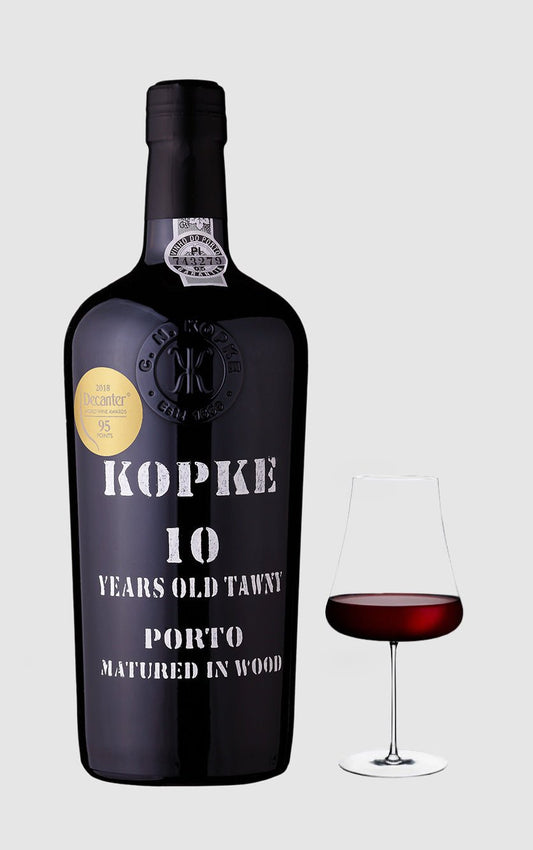 ★ 94 – Decanter★ 93 – James Suckling★ 92 – Robert Parker★ 90 – Wine Enthusiast★ 89 – DH Wines★ 4.1 – Vivino
★ 94 – Decanter★ 93 – James Suckling★ 92 – Robert Parker★ 90 – Wine Enthusiast★ 89 – DH Wines★ 4.1 – VivinoKopke 10 Year Old Tawny
Vendor:KopkeRegular price 199,00 DKKRegular priceUnit price / per -
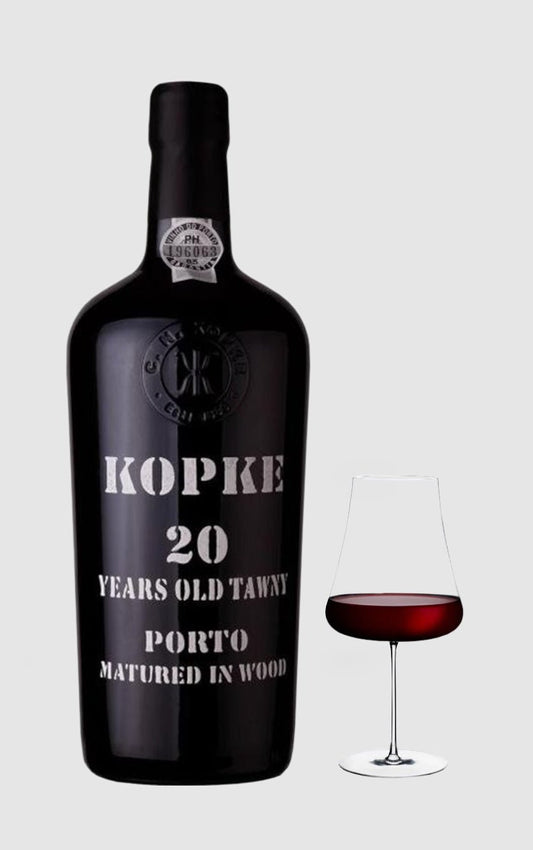 ★ 96 – Wine Enthusiast★ 96 – Robert Parker★ 94 – DH Wines★ 93 – Decanter★ 92 – James Suckling★ 4.2 – Vivino
★ 96 – Wine Enthusiast★ 96 – Robert Parker★ 94 – DH Wines★ 93 – Decanter★ 92 – James Suckling★ 4.2 – VivinoKopke 20 Year Old Tawny
Vendor:KopkeRegular price 399,00 DKKRegular priceUnit price / per -
 ★ 98 – Robert Parker★ 93 – James Suckling★ 93 – Decanter★ 93 – DH Wines★ 92 – Wine Enthusiast★ 4.3 – Vivino
★ 98 – Robert Parker★ 93 – James Suckling★ 93 – Decanter★ 93 – DH Wines★ 92 – Wine Enthusiast★ 4.3 – VivinoKopke 30 Year Old Tawny
Vendor:KopkeRegular price 649,00 DKKRegular priceUnit price / per -
 ★ 98 – Decanter★ 95 – Robert Parker★ 94 – DH Wines★ 92 – James Suckling★ 4.6 – Vivino
★ 98 – Decanter★ 95 – Robert Parker★ 94 – DH Wines★ 92 – James Suckling★ 4.6 – VivinoKopke 40 Year Old Tawny
Vendor:KopkeRegular price 995,00 DKKRegular priceUnit price / per -
 ★ 94 – DH Wines★ 4.5 – VivinoSold out
★ 94 – DH Wines★ 4.5 – VivinoSold outCups Harvest 1980
Vendor:KopkeRegular price 749,00 DKKRegular priceUnit price / per -
 ★ 94 – DH Wines★ 93 – James Suckling★ 93 – Decanter★ 92 – Robert Parker★ 4.4 – Vivino
★ 94 – DH Wines★ 93 – James Suckling★ 93 – Decanter★ 92 – Robert Parker★ 4.4 – VivinoCups Harvest 1978
Vendor:KopkeRegular price 995,00 DKKRegular priceUnit price / per -
 ★ 95 – DH Wines★ 4.2 – Vivino
★ 95 – DH Wines★ 4.2 – VivinoCups Harvest 1976
Vendor:KopkeRegular price 1.095,00 DKKRegular priceUnit price / per -
 ★ 94 – Wine Enthusiast★ 94 – DH Wines★ 93 – Decanter★ 90 – Robert Parker★ 4.4 – Vivino
★ 94 – Wine Enthusiast★ 94 – DH Wines★ 93 – Decanter★ 90 – Robert Parker★ 4.4 – VivinoCups Harvest 1975
Vendor:KopkeRegular price 1.095,00 DKKRegular priceUnit price / per
Collection: Port
Port is a fortified wine from the Douro Valley in northern Portugal, known for its sweetness, complexity and ability to age for decades. It is made by adding grape spirit during fermentation, which preserves the residual sugar and raises the alcohol content. The result is a powerful wine with depth, often used with dessert, cheese or as a meditation wine.
The main types of port wine
- Ruby Port : Young, fruity and deep red port wine without significant barrel aging. Often fresh and berry-like in expression.
- Reserve Ruby : Selected higher quality ruby with more concentration and structure.
- Late Bottled Vintage (LBV) : Ruby style from a single vintage, aged 4–6 years in barrel. Ready to drink upon release, but can be stored for 5–10 years.
- Vintage Port : Top level. Aged only briefly in cask and then for a long time in bottle. Often requires 10–30 years of aging.
- Tawny Port : Aged longer in cask, giving oxidative notes of nuts, caramel and dried fruit. Typically in 10, 20, 30 or 40 year versions.
- Colheita : Vintage Tawny from a single harvest. Aged for a minimum of 7 years in barrel.
- White Port : Lighter style made from green grapes. Can be dry, semi-sweet or sweet. Often used as an aperitif.
Grapes and production
Port wine is typically made from a blend of local Douro grapes:
- Touriga Nacional : Structure, color and aroma. The most prestigious grape.
- Touriga Franca : Softer character and floral notes.
- Tinta Roriz (Tempranillo) : Structure and acidity.
- Tinta Barroca and Tinto Cão : Gives fullness and spice.
Most port wines are still produced in the mountainous Douro region, where the climate creates intense, aromatic and concentrated wines. Fermentation is stopped with aguardente (grape spirit), after which the wine is aged in either large barrels (Ruby, LBV, Vintage) or small wooden barrels (Tawny, Colheita).
Frequently asked questions about port wine
What is the difference between Ruby and Tawny Port?
Ruby port is aged briefly and retains its dark color and fruit. Tawny is aged longer in wooden barrels and develops oxidative notes such as nuts and caramel. The color is more light golden.
How long can Vintage Port be stored?
Vintage Port is made for aging and can develop positively for 20–40 years. It should be decanted and drunk within a few days of opening.
How is port wine best served?
Port is served slightly chilled – Tawny at 12–14 °C and Ruby/Vintage at 16–18 °C. Suitable for blue cheese, chocolate or nuts.
- Choosing a selection results in a full page refresh.
- Opens in a new window.
